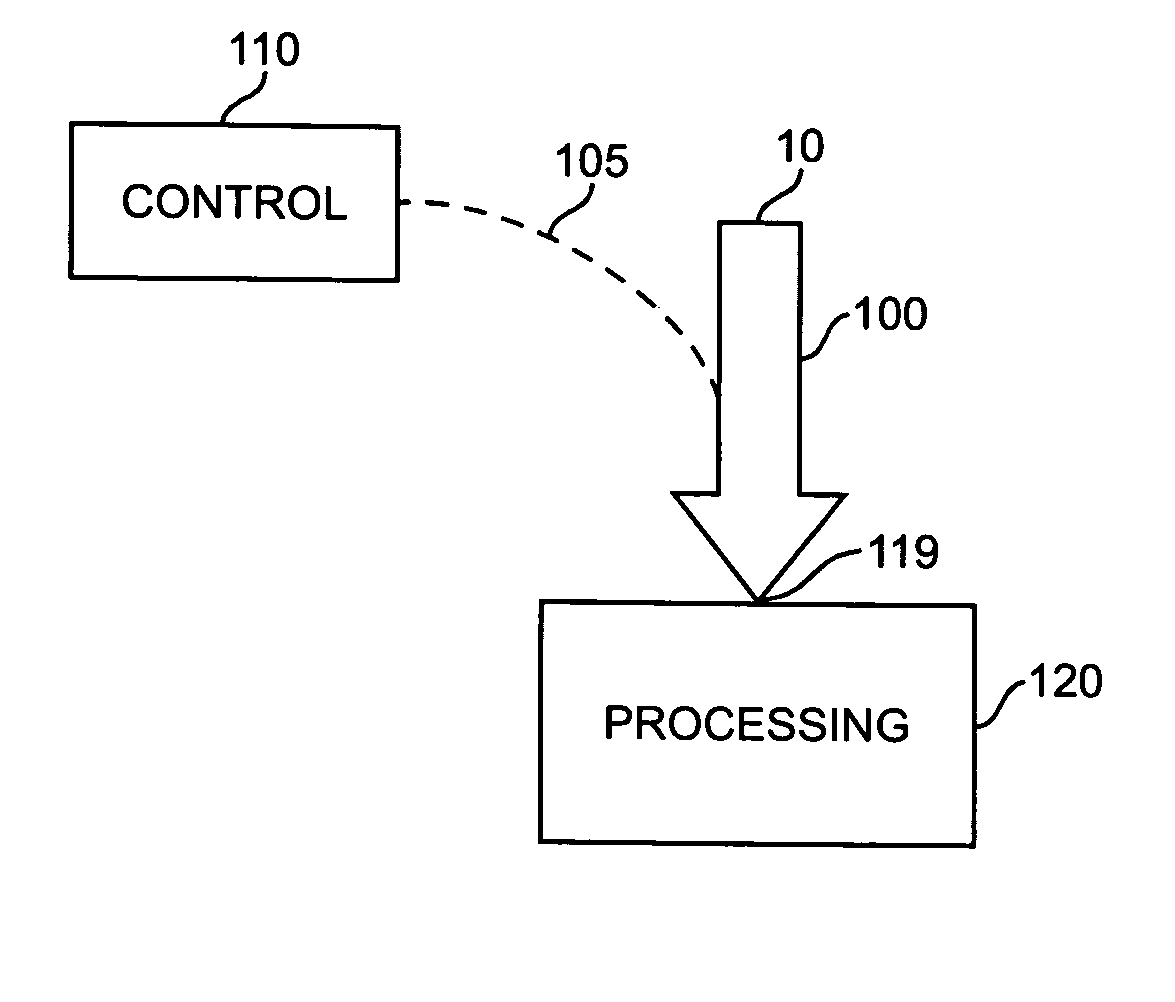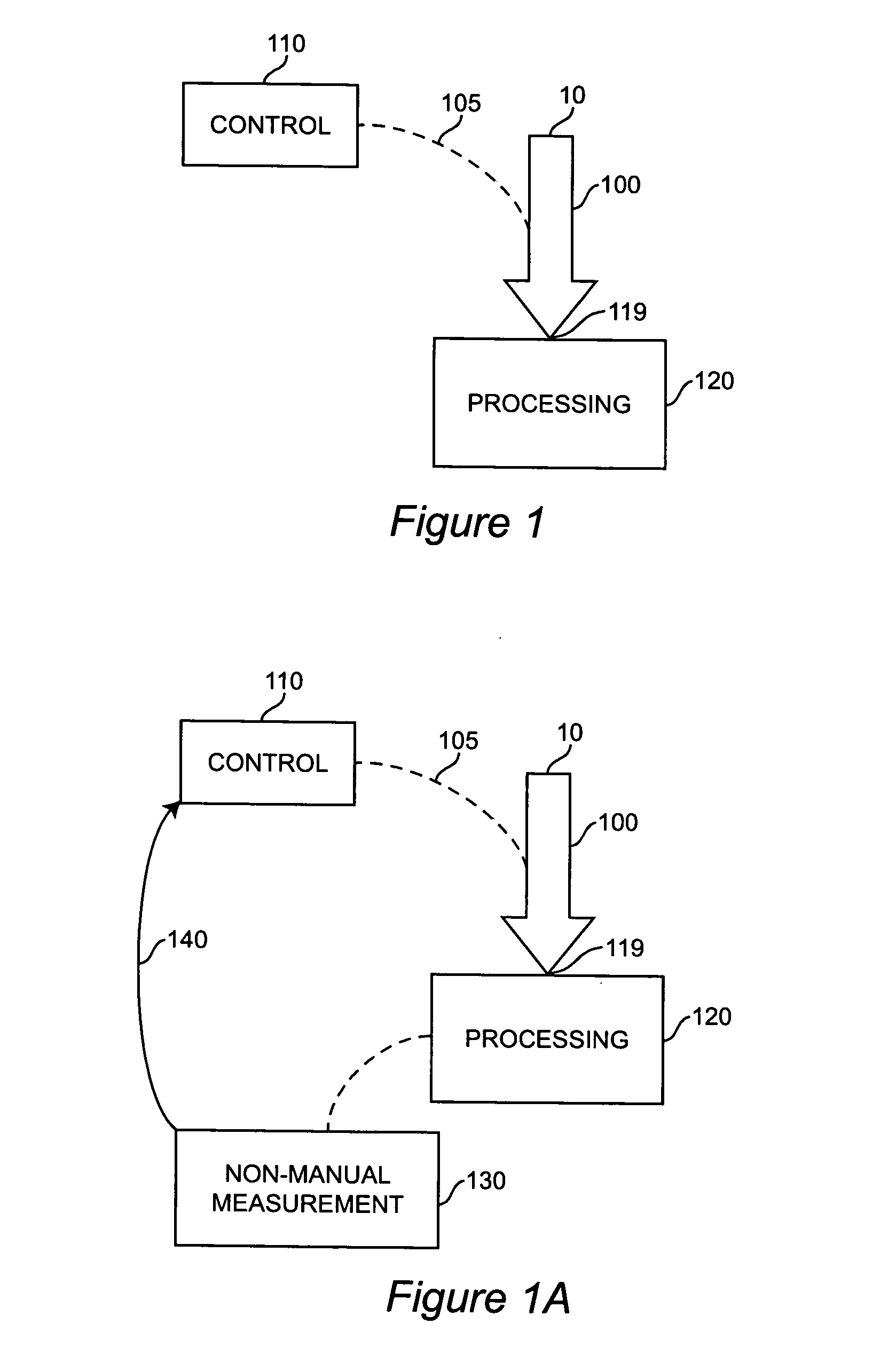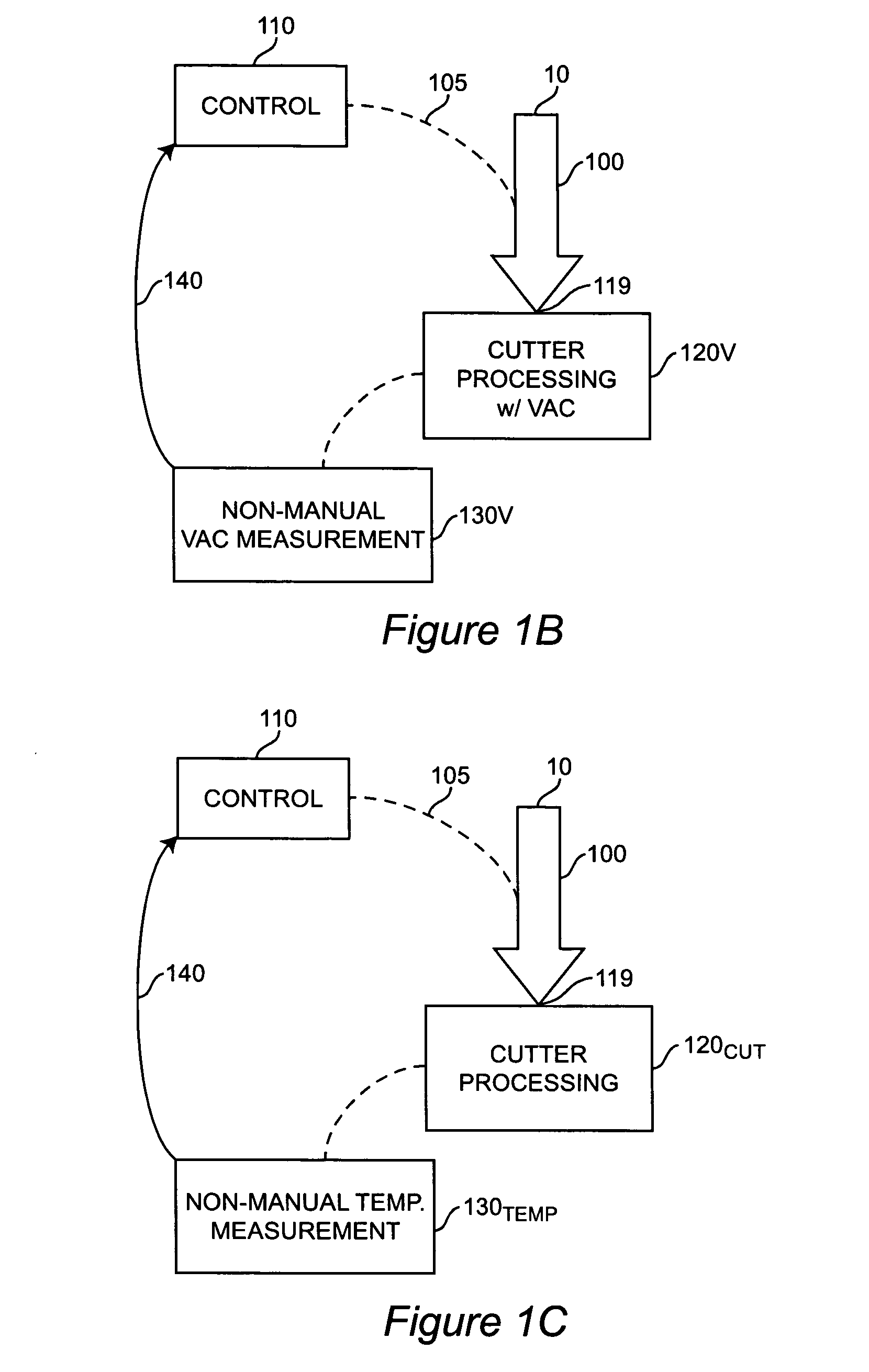Feeding mechanism auto-adjusting to load for use in automatic high-security destruction of a mixed load, and other feeding systems
a technology of automatic high-security destruction and feeding mechanism, which is applied in the field of mechanized loadfeeding and movement of a load, can solve the problems of large-dimensioned (non-portable) machinery, material may travel non-identical feed paths, damage or at least “stall” or jam the shredder, etc., and achieves high-security destruction, reduces the number of different input openings and/or feed paths, and slows the advance
- Summary
- Abstract
- Description
- Claims
- Application Information
AI Technical Summary
Benefits of technology
Problems solved by technology
Method used
Image
Examples
example 1
[0055] Referring to FIG. 1A, when the processing 120 comprises a motor-driven cutter (such as a rotating cutter), when the load (which may be a mixed load) is being fed towards the motor-driven cutter (such as a rotating cutter), the non-manual measurement 130 may be a measurement of current drawn by the cutter motor. In such a case, the current measurement is directly proportional to load.
example 2
[0056] When the processing 120 comprises a cutter, non-manual measurement 130 may comprise a crude, non-manual measurement of the load made before the load encounters the cutter. The feeding rate of the load (traveling on or in feed system 100) may be controlled 110 (such as slowed or increased) before the load encounters the cutter in processing 120. The system of this Example 2 may be used alone or in combination with a system of Example 1.
[0057] Referring to FIGS. 1, 1A, in a preferred embodiment, controlling 110 comprises a measurement (preferably a non-manual measurement) being made of the actual thickness of the load fed-in to feed system 100, and the feed is pre-slowed, as needed, in anticipation of the load's arrival 119 at the cutter.
example 2a
[0058] Pre-slowing as mentioned in Example 2 has been accomplished in one example by providing a spring-loaded, swinging vane that is pushed by load thickness. The vane actuates a switch, connected to the feed speed-control circuit that controls the feed path (such as feed path 100 in FIGS. 1 or 1A).
PUM
 Login to View More
Login to View More Abstract
Description
Claims
Application Information
 Login to View More
Login to View More - R&D
- Intellectual Property
- Life Sciences
- Materials
- Tech Scout
- Unparalleled Data Quality
- Higher Quality Content
- 60% Fewer Hallucinations
Browse by: Latest US Patents, China's latest patents, Technical Efficacy Thesaurus, Application Domain, Technology Topic, Popular Technical Reports.
© 2025 PatSnap. All rights reserved.Legal|Privacy policy|Modern Slavery Act Transparency Statement|Sitemap|About US| Contact US: help@patsnap.com



